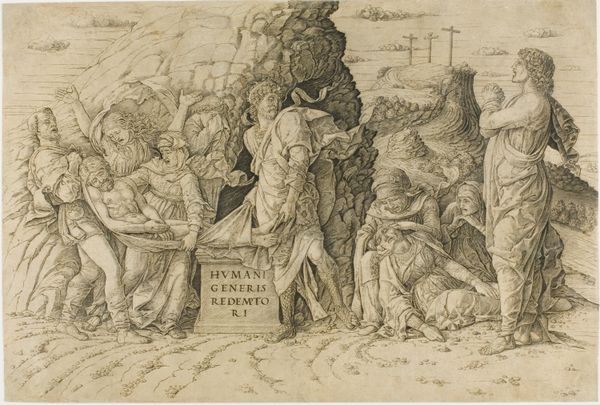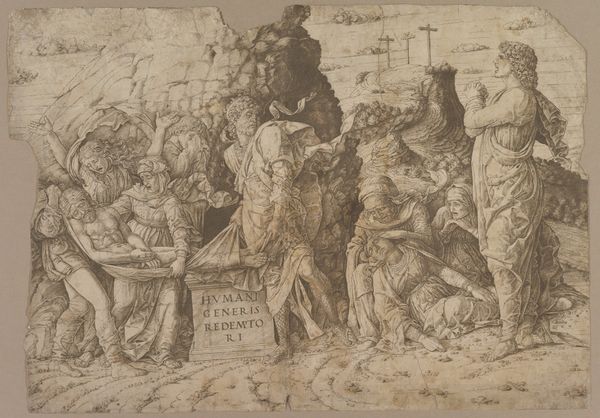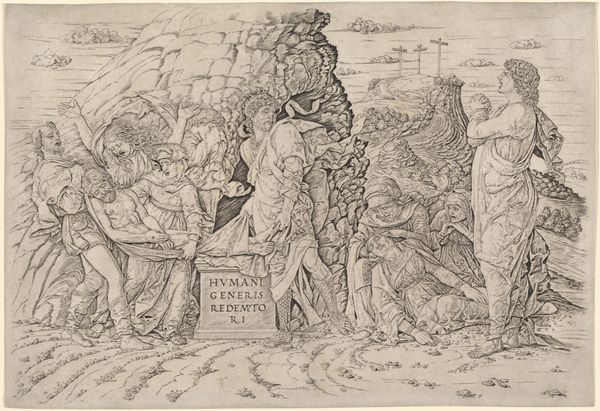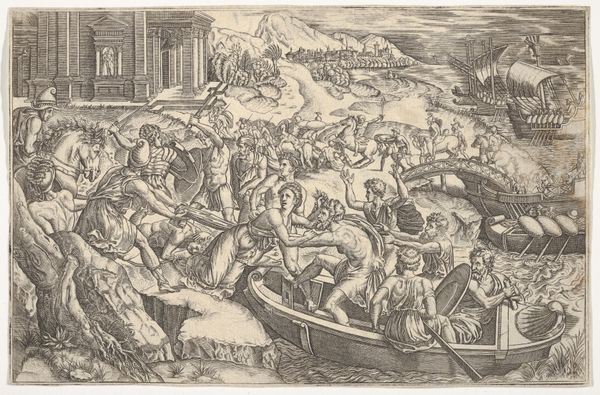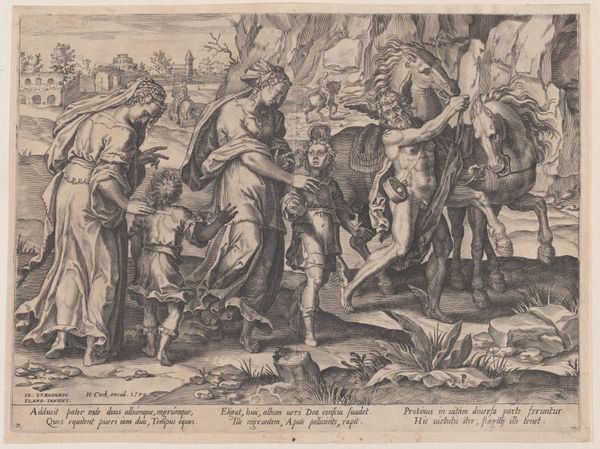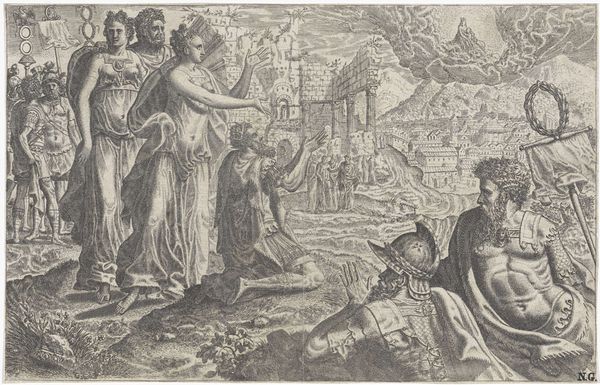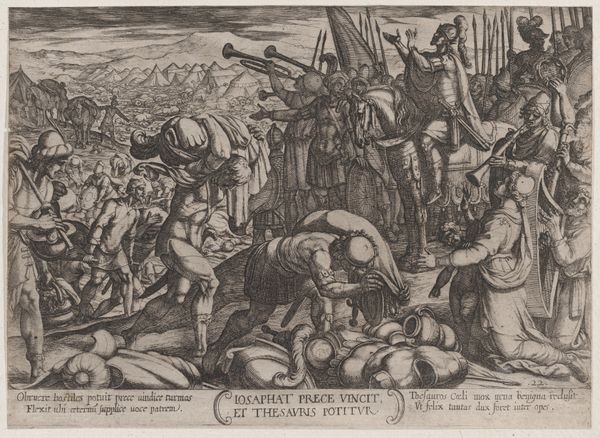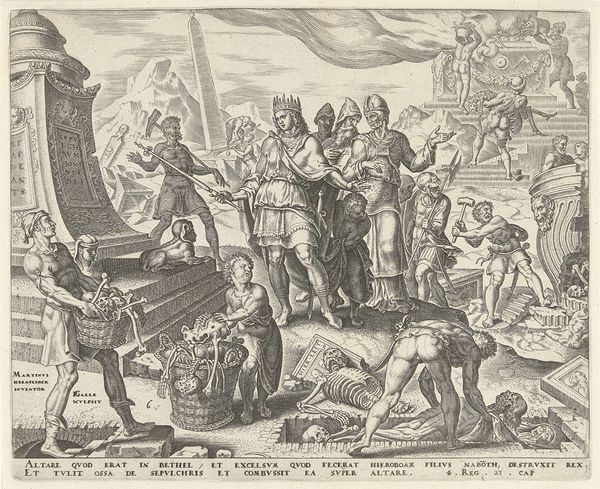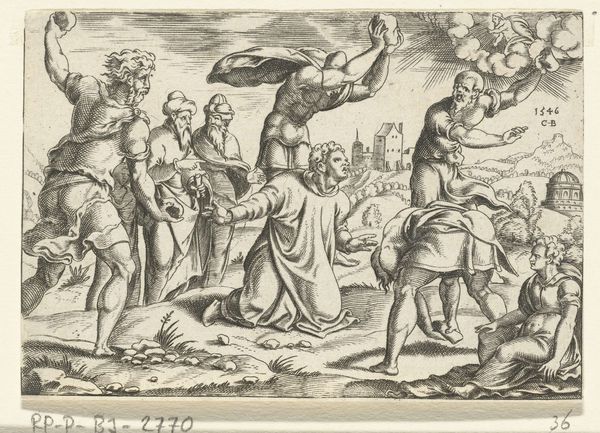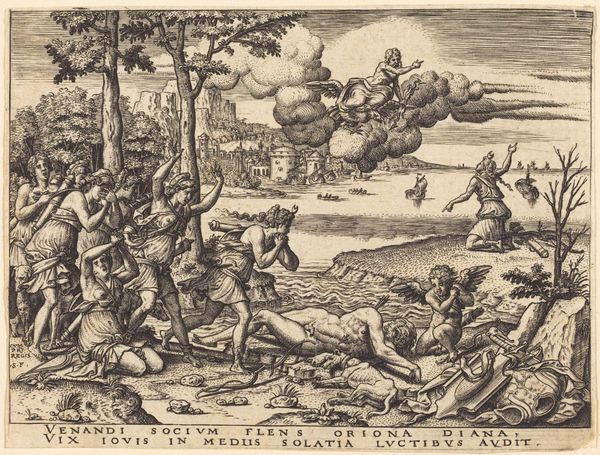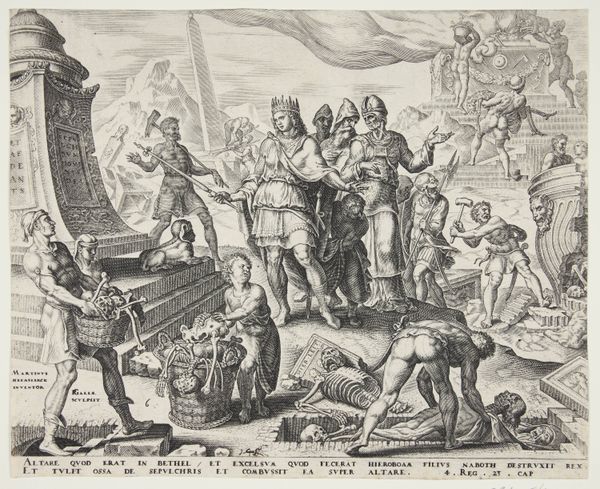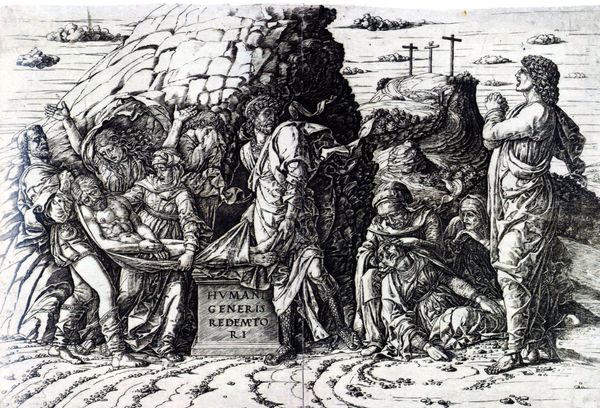
drawing, print, ink, engraving
#
drawing
#
narrative-art
#
pen drawing
# print
#
pen illustration
#
pen sketch
#
figuration
#
form
#
11_renaissance
#
personal sketchbook
#
ink
#
ink drawing experimentation
#
pen-ink sketch
#
line
#
pen work
#
sketchbook drawing
#
history-painting
#
storyboard and sketchbook work
#
italian-renaissance
#
sketchbook art
#
engraving
Dimensions: height 292 mm, width 434 mm
Copyright: Rijks Museum: Open Domain
Editor: This is "The Entombment of Christ," a pen and ink drawing attributed to Zoan Andrea, dating roughly from 1460 to 1549. It's currently housed at the Rijksmuseum. The detailed linework makes it feel both meticulous and deeply mournful. What stands out to you when you look at it? Curator: I'm drawn to how the artist used relatively inexpensive materials – pen, ink, and paper – to depict such a weighty subject. The act of engraving, in particular, was becoming more democratized during this period, allowing for wider dissemination of imagery. We see a shift in artistic labor, making religious narratives more accessible to a broader public, moving from individualized commissions to a type of reproducible commodity. Do you notice the implications? Editor: I hadn’t considered it in those terms. The transition to printmaking allowing for wider availability does transform art from a rare object to something more accessible… almost industrial. But how did the economic situation affect the way the artists of the time chose their materials? Curator: The very choice of pen and ink instead of, say, oil paints on a panel or fresco speaks volumes about production. It signifies not only skill and intention, but also the affordability and potential for reproduction that were shaping the art market and viewership at the time. It represents a tangible connection to a developing art market, one where images themselves were becoming a tradeable commodity. Consider, for example, where this artist might have learnt or toiled, such as in collaboration in a workshop. Editor: That’s a completely different way of thinking about Renaissance art than I’m used to. I will reconsider the context for how materials democratize visual messaging! Curator: Exactly. The "Entombment" becomes less about divine sorrow and more about the material conditions that allowed its replication and distribution.
Comments
No comments
Be the first to comment and join the conversation on the ultimate creative platform.
